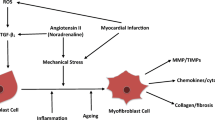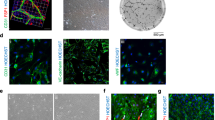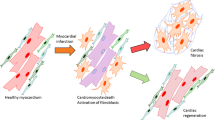Abstract
Although embryonic stem (ES) cells (ESCs) may be a promising donor source for the repair of infarcted or ischemic heart tissues, their successful application in regenerative medicine has been hampered by difficulties in enriching, identifying, and selecting cardiomyocytes from the differentiating cells. We established transgenic human ES cell lines by transcriptional control of the α-cardiac myosin heavy chain (α-MHC) promoter driving green fluorescent protein (GFP) expression. Differentiated GFP-expressing cells display the characteristics of cardiomyocytes (CMs). Apela, a recently identified short peptide, up-regulated the expression of the cardiac-restricted transcription factors Tbx5 and GATA4 as well as differentiated the cardiomyocyte markers α-MHC and β-MHC. Flow cytometric analysis showed that apela increased the percentage of GFP-expressing cells in the beating foci of the embryoid bodies. The percentage of cardiac troponin T (TNT)-positive cells and the protein expression of TNT were increased in the ES cell-derived CMs with apela treatment. Functionally, the contractile frequency of the ES-derived CMs responded appropriately to the vasoactive drugs isoprenaline and carbachol. Our work presented a protocol for specially labelling and enriching CMs by combining transgenic human ES cell lines and exogenous growth factor treatment.









Similar content being viewed by others
References
Laflamme, M. A., & Murry, C. E. (2005). Regenerating the heart. Nature Biotechnology, 23(7), 845–856.
Thomson, J. A., Itskovitz-Eldor, J., Shapiro, S. S., Waknitz, M. A., Swiergiel, J. J., Marshall, V. S., & Jones, J. M. (1998). Embryonic stem cell lines derived from human blastocysts. Science., 282(5391), 1145–1147.
Mazzotta, S., Lynch, A. T., & Hoppler, S. (2018). Cardiomyocyte differentiation from human embryonic stem cells. Methods in Molecular Biology, 1816, 67–78.
Okahara-Narita, J., Umeda, R., Nakamura, S., Mori, T., Noce, T., & Torii, R. (2012). Induction of pluripotent stem cells from fetal and adult cynomolgus monkey fibroblasts using four human transcription factors. Primates., 53(2), 205–213.
Zhao, Q., Wang, X., Wang, S., Song, Z., Wang, J., & Ma, J. (2017). Cardiotoxicity evaluation using human embryonic stem cells and induced pluripotent stem cell-derived cardiomyocytes. Stem Cell Research & Therapy, 8(1), 54.
Takahashi, K., Tanabe, K., Ohnuki, M., Narita, M., Ichisaka, T., Tomoda, K., & Yamanaka, S. (2007). Induction of pluripotent stem cells from adult human fibroblasts by defined factors. Cell., 131(5), 861–872.
Cherry, A. B., & Daley, G. Q. (2013). Reprogrammed cells for disease modeling and regenerative medicine. Annual Review of Medicine, 64(1), 277–290.
Laflamme, M. A., Gold, J., Xu, C., Hassanipour, M., Rosler, E., Police, S., Muskheli, V., & Murry, C. E. (2005). Formation of human myocardium in the rat heart from human embryonic stem cells. The American Journal of Pathology, 167(3), 663–671.
Laflamme, M. A., Chen, K. Y., Naumova, A. V., Muskheli, V., Fugate, J. A., Dupras, S. K., Reinecke, H., Xu, C., Hassanipour, M., Police, S., O'Sullivan, C., Collins, L., Chen, Y., Minami, E., Gill, E. A., Ueno, S., Yuan, C., Gold, J., & Murry, C. E. (2007). Cardiomyocytes derived from human embryonic stem cells in pro-survival factors enhance function of infarcted rat hearts. Nature Biotechnology, 25(9), 1015–1024.
van Laake, L. W., Passier, R., Doevendans, P. A., & Mummery, C. L. (2008). Human embryonic stem cell-derived cardiomyocytes and cardiac repair in rodents. Circulation Research, 102(9), 1008–1010.
Zhang, J., Klos, M., Wilson, G. F., Herman, A. M., Lian, X., Raval, K. K., Barron, M. R., Hou, L., Soerens, A. G., Yu, J., Palecek, S. P., Lyons, G. E., Thomson, J. A., Herron, T. J., Jalife, J., & Kamp, T. J. (2012). Extracellular matrix promotes highly efficient cardiac differentiation of human pluripotent stem cells: the matrix sandwich method. Circulation Research, 111(9), 1125–1136.
Lin, Y., Linask, K. L., Mallon, B., Johnson, K., Klein, M., Beers, J., Xie, W., Du, Y., Liu, C., Lai, Y., Zou, J., Haigney, M., Yang, H., Rao, M., & Chen, G. (2017). Heparin promotes cardiac differentiation of human pluripotent stem cells in chemically defined albumin-free medium, enabling consistent manufacture of cardiomyocytes. Stem Cells Translational Medicine, 6(2), 527–538.
Yang, L., Soonpaa, M. H., Adler, E. D., Roepke, T. K., Kattman, S. J., Kennedy, M., Henckaerts, E., Bonham, K., Abbott, G. W., Linden, R. M., Field, L. J., & Keller, G. M. (2008). Human cardiovascular progenitor cells develop from a KDR+ embryonic-stem-cell-derived population. Nature., 453(7149), 524–528.
Burridge, P. W., Thompson, S., Millrod, M. A., Weinberg, S., Yuan, X., Peters, A., Mahairaki, V., Koliatsos, V. E., Tung, L., & Zambidis, E. T. (2011). A universal system for highly efficient cardiac differentiation of human induced pluripotent stem cells that eliminates interline variability. PLoS One, 6(4), e18293.
Ren, M., Han, Z., Li, J., Feng, G., & Ouyang, S. (2015). Ascorbic acid delivered by mesoporous silica nanoparticles induces the differentiation of human embryonic stem cells into cardiomyocytes. Materials Science & Engineering. C, Materials for Biological Applications, 56, 348–355.
Lian, X., Hsiao, C., Wilson, G., Zhu, K., Hazeltine, L. B., Azarin, S. M., Raval, K. K., Zhang, J., Kamp, T. J., & Palecek, S. P. (2012). Robust cardiomyocyte differentiation from human pluripotent stem cells via temporal modulation of canonical Wnt signaling. Proceedings of the National Academy of Sciences of the United States of America, 109(27), e1848–e1857.
Minami, I., Yamada, K., Otsuji, T. G., Yamamoto, T., Shen, Y., Otsuka, S., Kadota, S., Morone, N., Barve, M., Asai, Y., Tenkova-Heuser, T., Heuser, J. E., Uesugi, M., Aiba, K., & Nakatsuji, N. (2012). A small molecule that promotes cardiac differentiation of human pluripotent stem cells under defined, cytokine- and xeno-free conditions. Cell Reports, 2(5), 1448–1460.
Chng, S. C., Ho, L., Tian, J., & Reversade, B. (2013). ELABELA: a hormone essential for heart development signals via the apelin receptor. Developmental Cell, 27(6), 672–680.
Pauli, A., Norris, M. L., Valen, E., Chew, G. L., Gagnon, J. A., Zimmerman, S., Mitchell, A., Ma, J., Dubrulle, J., Reyon, D., Tsai, S. Q., Joung, J. K., Saghatelian, A., & Schier, A. F. (2014). Toddler: an embryonic signal that promotes cell movement via Apelin receptors. Science., 343(6172), 1248636.
Wang, Z., Xu, G., Wu, Y., Liu, S., Sun, B., & Dai, Q. (2008). Neuregulin-1 promotes cardiomyocyte differentiation of genetically engineered embryonic stem cell clones. BMB Reports, 41(10), 699–704.
Wang, Z., Yu, D., Wang, M., Wang, Q., Kouznetsova, J., Yang, R., Qian, K., Wu, W., Shuldiner, A., Sztalryd, C., Zou, M., Zheng, W., & Gong, D. W. (2015). Elabela-apelin receptor signaling pathway is functional in mammalian systems. Scientific Reports, 5(1), 8170.
Di Pasquale, E., Song, B., & Condorelli, G. (2013). Generation of human cardiomyocytes: a differentiation protocol from feeder-free human induced pluripotent stem cells. Journal of Visualized Experiments, 28(76).
Wang, Z., & Huang, J. (2014). Neuregulin-1 increases connexin-40 and connexin-45 expression in embryonic stem cell-derived cardiomyocytes. Applied Biochemistry and Biotechnology, 174(2), 483–493.
Zhang, P., Li, J., Tan, Z., Wang, C., Liu, T., Chen, L., Yong, J., Jiang, W., Sun, X., Du, L., Ding, M., & Deng, H. (2008). Short-term BMP-4 treatment initiates mesoderm induction in human embryonic stem cells. Blood., 111(4), 1933–1941.
Watabe, T., & Miyazono, K. (2009). Roles of TGF-beta family signaling in stem cell renewal and differentiation. Cell Research, 19(1), 103–115.
Nostro, M. C., Cheng, X., Keller, G. M., & Gadue, P. (2008). Wnt, activin, and BMP signaling regulate distinct stages in the developmental pathway from embryonic stem cells to blood. Cell Stem Cell, 2(1), 60–71.
Willems, E., & Leyns, L. (2008). Patterning of mouse embryonic stem cell-derived pan-mesoderm by Activin A/Nodal and Bmp4 signaling requires fibroblast growth factor activity. Differentiation., 76(7), 745–759.
Wang, I. N., Wang, X., Ge, X., Anderson, J., Ho, M., Ashley, E., Liu, J., Butte, M. J., Yazawa, M., Dolmetsch, R. E., Quertermous, T., & Yang, P. C. (2012). Apelin enhances directed cardiac differentiation of mouse and human embryonic stem cells. PLoS One, 7(6), e38328.
Parikh, A., Wu, J., Blanton, R. M., & Tzanakakis, E. S. (2015). Signaling pathways and gene regulatory networks in cardiomyocyte differentiation. Tissue Engineering. Part B, Reviews, 21(4), 377–392.
Duelen, R., Gilbert, G., Patel, A., de Schaetzen, N., De Waele, L., Roderick, L., Sipido, K. R., Verfaillie, C. M., Buyse, G. M., Thorrez, L., & Sampaolesi, M. (2017). Activin A modulates CRIPTO-1/HNF4α+ cells to guide cardiac differentiation from human embryonic stem cells. Stem Cells International, 2017, 4651238.
Kehat, I., Gepstein, A., Spira, A., Itskovitz-Eldor, J., & Gepstein, L. (2002). High-resolution electrophysiological assessment of human embryonic stem cell-derived cardiomyocytes: a novel in vitro model for the study of conduction. Circulation Research, 91(8), 659–661.
Kehat, I., Khimovich, L., Caspi, O., Gepstein, A., Shofti, R., Arbel, G., Huber, I., Satin, J., Itskovitz-Eldor, J., & Gepstein, L. (2004). Electromechanical integration of cardiomyocytes derived from human embryonic stem cells. Nature Biotechnology, 22(10), 1282–1289.
Huber, I., Itzhaki, I., Caspi, O., Arbel, G., Tzukerman, M., Gepstein, A., Habib, M., Yankelson, L., Kehat, I., & Gepstein, L. (2007). Identification and selection of cardiomyocytes during human embryonic stem cell differentiation. The FASEB Journal, 21(10), 2551–2563.
Bizy, A., Guerrero-Serna, G., Hu, B., Ponce-Balbuena, D., Willis, B. C., Zarzoso, M., Ramirez, R. J., Sener, M. F., Mundada, L. V., Klos, M., Devaney, E. J., Vikstrom, K. L., Herron, T. J., & Jalife, J. (2013). Myosin light chain 2-based selection of human iPSC-derived early ventricular cardiac myocytes. Stem Cell Research, 11(3), 1335–1347.
Veevers, J., Farah, E. N., Corselli, M., Witty, A. D., Palomares, K., Vidal, J. G., Emre, N., Carson, C. T., Ouyang, K., Liu, C., van Vliet, P., Zhu, M., Hegarty, J. M., Deacon, D. C., Grinstein, J. D., Dirschinger, R. J., Frazer, K. A., Adler, E. D., Knowlton, K. U., Chi, N. C., Martin, J. C., Chen, J., & Evans, S. M. (2018). Cell-surface marker signature for enrichment of ventricular cardiomyocytes derived from human embryonic stem cells. Stem Cell Reports, 11(3), 828–841.
Jiang, Y., Park, P., Hong, S. M., & Ban, K. (2018). Maturation of cardiomyocytes derived from human pluripotent stem cells: current strategies and limitations. Molecules and Cells, 41(7), 613–621.
Tuteja, N. (2009). Signaling through G protein coupled receptors. Plant Signaling & Behavior, 4(10), 942–947.
Liebmann, C., & Böhmer, F. D. (2000). Signal transduction pathways of G protein-coupled receptors and their cross-talk with receptor tyrosine kinases: lessons from bradykinin signaling. Current Medicinal Chemistry, 7(9), 911–943.
Gudermann, T. (2001). Multiple pathways of ERK activation by G protein-coupled receptors. Novartis Foundation Symposium, 239, 68–79.
Blaukat, A., Barac, A., Cross, M. J., Offermanns, S., & Dikic, I. (2000). G protein-coupled receptor-mediated mitogen-activated protein kinase activation through cooperation of Galpha(q) and Galpha(i) signals. Molecular and Cellular Biology, 20(18), 6837–6848.
Cox, C. M., D'Agostino, S. L., Miller, M. K., Heimark, R. L., & Krieg, P. A. (2006). Apelin, the ligand for the endothelial G-protein-coupled receptor, APJ, is a potent angiogenic factor required for normal vascular development of the frog embryo. Developmental Biology, 296(1), 177–189.
Tucker, B., Hepperle, C., Kortschak, D., Rainbird, B., Wells, S., Oates, A. C., & Lardelli, M. (2007). Zebrafish Angiotensin II Receptor-like 1a (agtrl1a) is expressed in migrating hypoblast, vasculature, and in multiple embryonic epithelia. Gene Expression Patterns, 7(3), 258–265.
Kidoya, H., Ueno, M., Yamada, Y., Mochizuki, N., Nakata, M., Yano, T., Fujii, R., & Takakura, N. (2008). Spatial and temporal role of the apelin/APJ system in the caliber size regulation of blood vessels during angiogenesis. The EMBO Journal, 27(3), 522–534.
Kälin, R. E., Kretz, M. P., Meyer, A. M., Kispert, A., Heppner, F. L., & Brändli, A. W. (2007). Paracrine and autocrine mechanisms of apelin signaling govern embryonic and tumor angiogenesis. Developmental Biology, 305(2), 599–614.
Ota, T., Suzuki, Y., Nishikawa, T., Otsuki, T., Sugiyama, T., Irie, R., Wakamatsu, A., Hayashi, K., Sato, H., Nagai, K., Kimura, K., Makita, H., Sekine, M., Obayashi, M., Nishi, T., Shibahara, T., Tanaka, T., Ishii, S., Yamamoto, J., Saito, K., Kawai, Y., Isono, Y., Nakamura, Y., Nagahari, K., Murakami, K., Yasuda, T., Iwayanagi, T., Wagatsuma, M., Shiratori, A., Sudo, H., Hosoiri, T., Kaku, Y., Kodaira, H., Kondo, H., Sugawara, M., Takahashi, M., Kanda, K., Yokoi, T., Furuya, T., Kikkawa, E., Omura, Y., Abe, K., Kamihara, K., Katsuta, N., Sato, K., Tanikawa, M., Yamazaki, M., Ninomiya, K., Ishibashi, T., Yamashita, H., Murakawa, K., Fujimori, K., Tanai, H., Kimata, M., Watanabe, M., Hiraoka, S., Chiba, Y., Ishida, S., Ono, Y., Takiguchi, S., Watanabe, S., Yosida, M., Hotuta, T., Kusano, J., Kanehori, K., Takahashi-Fujii, A., Hara, H., Tanase, T. O., Nomura, Y., Togiya, S., Komai, F., Hara, R., Takeuchi, K., Arita, M., Imose, N., Musashino, K., Yuuki, H., Oshima, A., Sasaki, N., Aotsuka, S., Yoshikawa, Y., Matsunawa, H., Ichihara, T., Shiohata, N., Sano, S., Moriya, S., Momiyama, H., Satoh, N., Takami, S., Terashima, Y., Suzuki, O., Nakagawa, S., Senoh, A., Mizoguchi, H., Goto, Y., Shimizu, F., Wakebe, H., Hishigaki, H., Watanabe, T., Sugiyama, A., Takemoto, M., Kawakami, B., Yamazaki, M., Watanabe, K., Kumagai, A., Itakura, S., Fukuzumi, Y., Fujimori, Y., Komiyama, M., Tashiro, H., Tanigami, A., Fujiwara, T., Ono, T., Yamada, K., Fujii, Y., Ozaki, K., Hirao, M., Ohmori, Y., Kawabata, A., Hikiji, T., Kobatake, N., Inagaki, H., Ikema, Y., Okamoto, S., Okitani, R., Kawakami, T., Noguchi, S., Itoh, T., Shigeta, K., Senba, T., Matsumura, K., Nakajima, Y., Mizuno, T., Morinaga, M., Sasaki, M., Togashi, T., Oyama, M., Hata, H., Watanabe, M., Komatsu, T., Mizushima-Sugano, J., Satoh, T., Shirai, Y., Takahashi, Y., Nakagawa, K., Okumura, K., Nagase, T., Nomura, N., Kikuchi, H., Masuho, Y., Yamashita, R., Nakai, K., Yada, T., Nakamura, Y., Ohara, O., Isogai, T., & Sugano, S. (2004). Complete sequencing and characterization of 21,243 full-length human cDNAs. Nature Genetics, 36(1), 40–45.
Hassan, A. S., Hou, J., Wei, W., & Hoodless, P. A. (2010). Expression of two novel transcripts in the mouse definitive endoderm. Gene Expression Patterns, 10(2–3), 127–134.
Kawamata, Y., Habata, Y., Fukusumi, S., Hosoya, M., Fujii, R., Hinuma, S., Nishizawa, N., Kitada, C., Onda, H., Nishimura, O., & Fujino, M. (2001). Molecular properties of apelin: tissue distribution and receptor binding. Biochimica et Biophysica Acta, 1538(2–3), 162–171.
Sánchez, A., Jones, W. K., Gulick, J., Doetschman, T., & Robbins, J. (1991). Myosin heavy chain gene expression in mouse embryoid bodies. An in vitro developmental study. The Journal of Biological Chemistry, 266(33), 22419–22426.
Ng, W. A., Grupp, I. L., Subramaniam, A., & Robbins, J. (1991). Cardiac myosin heavy chain mRNA expression and myocardial function in the mouse heart. Circulation Research, 68(6), 1742–1750.
Westfall, M. V., Samuelson, L. C., & Metzger, J. M. (1996). Troponin I isoform expression is developmentally regulated in differentiating embryonic stem cell derived cardiac myocytes. Developmental Dynamics, 206(1), 24–38.
Acknowledgements
The work was supported by the National Natural Science Foundation of China (Award No. 81570365). We thank Dawei Gong, Rongze Yang, and Daozhan Yu from the University of Maryland School of Medicine for their valuable help in experiments.
Author information
Authors and Affiliations
Corresponding authors
Ethics declarations
Conflict of Interest
The authors declared that they have no conflicts of interest.
Additional information
Publisher’s Note
Springer Nature remains neutral with regard to jurisdictional claims in published maps and institutional affiliations.
Rights and permissions
About this article
Cite this article
Wang, Z., Huang, J. Apela Promotes Cardiomyocyte Differentiation from Transgenic Human Embryonic Stem Cell Lines. Appl Biochem Biotechnol 189, 396–410 (2019). https://doi.org/10.1007/s12010-019-03012-2
Received:
Accepted:
Published:
Issue Date:
DOI: https://doi.org/10.1007/s12010-019-03012-2




